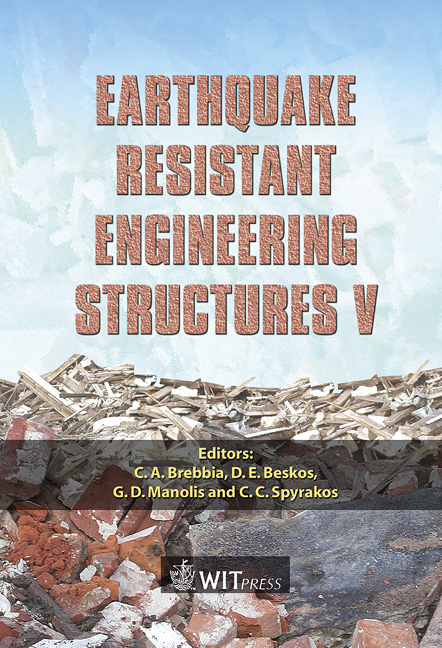A Study On Hysteretic Plastic Energy Input Into Single And Multi Degree Of Freedom Systems Subjected To Earthquakes
Price
Free (open access)
Transaction
Volume
81
Pages
12
Published
2005
Size
1,259 kb
Paper DOI
10.2495/ERES050261
Copyright
WIT Press
Author(s)
K. Sawada, A. Matsuo & K. Ujiie
Abstract
This paper relates the hysteretic plastic energy inputs of single degree of freedom (SDOF) and multi degree of freedom (MDOF) systems. First, the simple empirical rule between the hysteretic plastic energy input ratio EH/EI and the ratio of the yield strength to the response acceleration spectrum are shown by a large data set of numerical results. Based on this rule, a prediction method of seismic input energy EI and hysteretic plastic energy EH using a design acceleration spectrum is presented. Finally, the time domain analyses of SDOF and MDOF systems under generated earthquake motions fitted to the design spectrum show the validity of the presented method. Keywords: earthquake motion, hysteretic plastic energy, SDOF system, MDOF system. 1 Introduction Many modern seismic design building codes allow for the plastic deformation in structural members and avoid the catastrophic collapse in severe earthquakes. Seismic design approaches based on the constraint of the maximum plastic deformation of structure have been presented in many previous studies [1, 2]. On the other hand, energy based design concepts have also been proposed. Housner [3] evaluated the total energy input that contributes to a building's responses in elastic and elastic-plastic systems. Akiyama [4] developed Housner's method to devise an earthquake-resistant design method that could be applied in a uniform manner from one-story frames to high-rise buildings. In the
Keywords
earthquake motion, hysteretic plastic energy, SDOF system, MDOF system.





